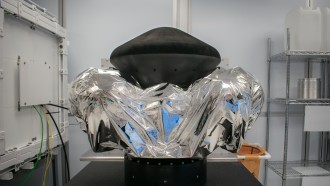Screening is a process of looking for cancer before any symptoms occur, which can help identify the disease during its early stages and, consequently, guarantee better results in remission. This is particularly useful since the symptoms suggest that the cancerous tissue has begun to spread in the body.
Researchers' focus aims at better comprehending the likelihood of getting certain types of cancer and the predispositions behind them, as well as the potential factors responsible for its development.
When it comes to breast cancer, mammograms are considered to be a good measure of identifying the disease in its early stages and, therefore, prevent its aggravation. Finding the tumors earlier usually means more efficient treatments and less mastectomies.
Back in 2009, the U.S. Preventive Services Task Force recommended routine screening mammograms at the age of 50 instead of 40 in women with average cancer risks. Very controversial, the measure wasn't adopted by all the specialists.
Since then a number of associations have insisted that women should be undergoing mammogram tests starting at the age of 40. Among these, the American Medical Association, the American College of Obstetricians and Gynecologists, the American College of Radiology, the American Cancer Society, the National Cancer Institute and the National Comprehensive Cancer Network were the most vocal on the matter.
However, mammograms are not perfect either. Breast tissue can have cancerous tumors that will not be visible in the test. False negative isn't the only error that could appear, as false positives have also been documented; they happen when an abnormality looking like cancer is identified but turns out to be benign.
Another method women are advised to use permanently is self-examination, in addition to consulting professionals regularly. Provided that the tests are not conclusive, MRIs or ultrasounds can also be performed. Because of the advances in technology, the amount of radiation is even less than on a standard X-ray.
While mammograms are considered to be a relatively accurate form of testing, other possible reasons for these errors include having denser tissue. The thicker the breast tissue, the more complicated it is to identify cancer, as the test shows both the tumors and denser tissue in white, which can sometimes lead to false negatives.
Provided that it can save your life, mammograms are a fast procedure. They shouldn't take more than 20 minutes and they reduce the risks of dying of the disease by up to 30 percent or more. Younger women, or women with denser tissue, are advised to use digital mammograms.








